Our mission is to promote education and fellowship through the sharing of information and the promotion of the world's greatest hobby. - Model Railroading.
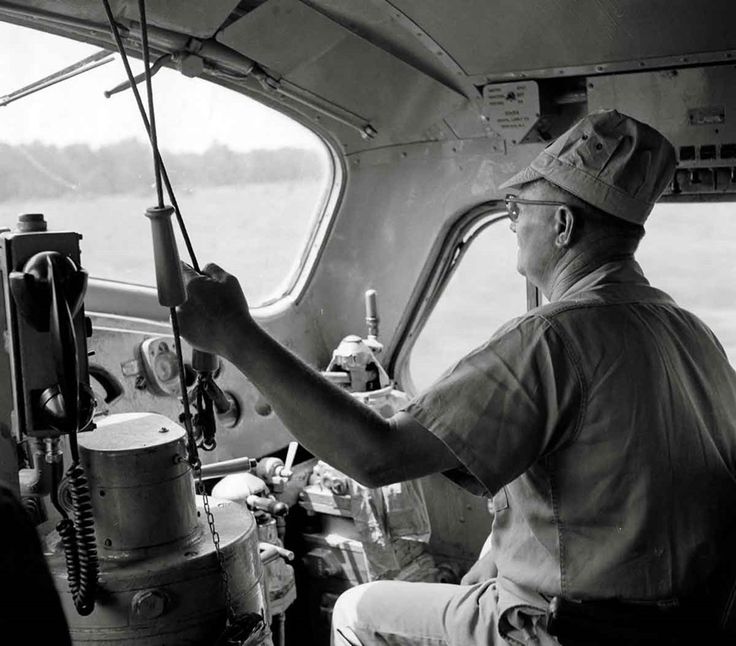 Greetings, fellow Black Swampers. We are finally passing the ides of March and hopefully Spring is nigh! We’ve got some great things planned for our March 29 and April 26 meetings, then it will be time for our annual Spring outing. Do you have some ideas for this year’s adventure? We have been to museums, toured layouts, and ridden trains. We are going to discuss this at the March meeting, so give it some serious thought before then and be prepared to share your thoughts.
Greetings, fellow Black Swampers. We are finally passing the ides of March and hopefully Spring is nigh! We’ve got some great things planned for our March 29 and April 26 meetings, then it will be time for our annual Spring outing. Do you have some ideas for this year’s adventure? We have been to museums, toured layouts, and ridden trains. We are going to discuss this at the March meeting, so give it some serious thought before then and be prepared to share your thoughts.
I had a recent Eureka moment regarding modeling equipment. Back in 1975, I bought my first airbrush. $$$ was tight so I picked up a basic single-action Badger 200 and adapter kit to use cans of Propel instead of a compressor. It had very little control for flow or spray pattern, but in those days Floquil paints were the gold standard and they were very forgiving. My biggest problem came after spraying for a few minutes as the can got so cold it would frost up and lose about half its pressure. My remedy was to float it in a large mixing bowl of warm water! Eventually I bought a basic compressor and double-action airbrush, but again I made economy the priority and contiued to pay the price in quality and user-friendliness. Fast forward to a couple of years ago when I bought a new compressor with a tank. Wow! What progress! This piece is very quiet and thanks to the tank, it only runs about 1/3 of the time while I am painting. It has an excellent pressure regulator, water trap, pressure release, and rubber feet that keep it from “walking” across my workbench from vibration. But alas, I still did not know what I was missing in a proper airbrush. In January, I attended a train show where Badger was exhibiting. After watching some demos, I bought an Xtreme Patriot 105 airbrush. Wow again! This is one awesome airbrush (and I don’t say “awesome”). This thing is built like a tank, fits my hand like a glove, and lays down everything from a 2” wide solid pattern to a shadowy pencil line with just a stroke of your index finger. I can use it to paint the deck and structures on the 4’ ship I am building, lay down subtle weathering tints along individual boxcar braces, or lightly spritz weathering colors on trucks, couplers, and loco parts. The control is amazing: air pressure, base air volume, momentary air volume, and momentary paint volume. This is also the first gravity-fed airbrush I’ve used. I always hated cleanup using the bottom-mounted bottles and tubes. With the paint bowl on top, not only is cleanup a breeze, but you need less air to feed paint effectively, so you get finer dispersion and less tip drying. So did I give up on economy? No indeed, because I scored this gun for $75 as a show special. It lists at $165 and street prices run from $99 to $135. I’m telling you this because if you ever run into Badger at a show, that’s the time to take a close look and make your purchase! I plan to do a mini-clinic at one of our meetings soon to show you this equipment. I’ll have more info then and I think you will like what you see.
I'm looking forward to seeing you March 29 and April 26. Don't forget to bring outing ideas to the March meeting, and we’ll have elections in April.
See ya on down the line,
Dave McMullian,
Superintendent
 I am going to keep things short today, we have 2 articles in this months train order for you to check out.
I am going to keep things short today, we have 2 articles in this months train order for you to check out.
Remember the division now has a facebook page. Check it out! Clicking on the facebook image will take you to our page.
In the January meeting Phil Kaufman got his NMRA "Golden Spike" award. If anyone is interested here is where to find the award program details on the NMRA page.
Paul Marsden,
Editor
Welcome Everyone
We have a great line-up for the March meeting of the Black Swamp Division. Last month's Show and Tell was really informative. Please remember to bring something for Show and Tell. Anything you are building, a slide to share, something you just purchased, something you found in a box you forgot you had, just bring something to share and talk about.
This month we will have a presentation on this year's regional convention, the final slate of people up for the next 2 year term election, and a panel discussion on turnout controls. The panel will discuss caboose throws, tortoise machines, servos, blue points, and cascade switches for yard panels. So bring some paper and something to write with to take notes as we will be throwing a lot of information around (pun intended).
Hope to see you on March 29th!
Norm Cattell,
Assistant Superintendent
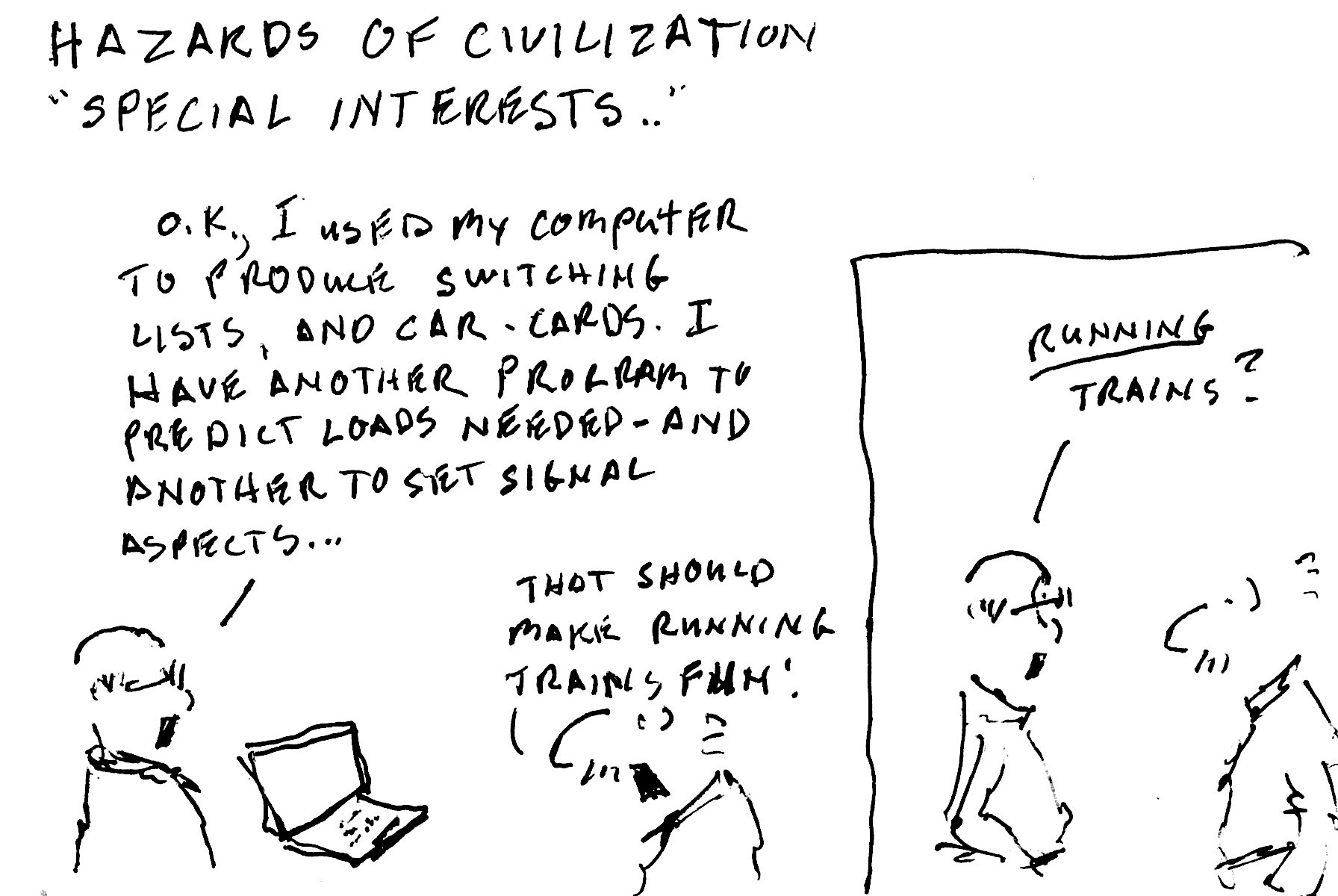
Jeff Schumaker show and tell at the last meeting, set off my left side of my brain and wanting to know more. I felt like I knew about the trench railways, but I did not know, so I went home and got on line and did some research. This included using some content previously written in a blog written by Marshall Stull. For his blog, find a link at the end of this article.
 For those that do not know, I am from a city called Leeds in England, and one of the things it is known for is engineering, and I wondered who built locos for the trench railways.
My research quickly helped me prove I was right. The Hunslet works from Leeds was the main British provider of engines for the trench railways during WW1: The Hunslet Engine Company was founded in 1864 in Hunslet, Leeds, England.
The company manufactured steam-powered shunting locomotives for over 100 years, and currently manufactures diesel-engined shunting locomotives.
The last industrial steam engine built in Britain was built at Hunslet in 1971 for export to Trangkil sugar mill in Central Java, Indonesia.
The Hunslet built a 4-6-0T loco for the war effort, apart from being one of the largest class of one single type of narrow gauge loco built within the UK, the vast majority were also completed within the space of three years.
There were 155 ordered by the War Department from Hunslet for use behind the trenches during WW1 for the movement of personnel, munitions, and equipment.
They were completed at a time when Hunslet were also constructing howitzers, shells, and machinery to make shells as well as a limited number of other locos.
By comparison, in peace time they averaged about 40 locos of all designs per year.
For those that do not know, I am from a city called Leeds in England, and one of the things it is known for is engineering, and I wondered who built locos for the trench railways.
My research quickly helped me prove I was right. The Hunslet works from Leeds was the main British provider of engines for the trench railways during WW1: The Hunslet Engine Company was founded in 1864 in Hunslet, Leeds, England.
The company manufactured steam-powered shunting locomotives for over 100 years, and currently manufactures diesel-engined shunting locomotives.
The last industrial steam engine built in Britain was built at Hunslet in 1971 for export to Trangkil sugar mill in Central Java, Indonesia.
The Hunslet built a 4-6-0T loco for the war effort, apart from being one of the largest class of one single type of narrow gauge loco built within the UK, the vast majority were also completed within the space of three years.
There were 155 ordered by the War Department from Hunslet for use behind the trenches during WW1 for the movement of personnel, munitions, and equipment.
They were completed at a time when Hunslet were also constructing howitzers, shells, and machinery to make shells as well as a limited number of other locos.
By comparison, in peace time they averaged about 40 locos of all designs per year.
For the American Expeditionary Force, Baldwin produced a 2-6-2T numbered 5001-5195. Number 5195 was lost at sea while being transferred to Davenport Locomotive Works. These locomotives were initially painted grey with black smoke boxes. Baldwin also built 35 hp and 50 hp gas mechanical locomotives for the AEF. The lighter locomotives were numbered 8001-8063. The heavier locomotives were numbered 7001-7126. The gas mechanical were only able to operate at low speeds of about 4.5 mph, roughly the speed of a slow jogger.
During Jeff's talk their was a lot of interesting comments/questions, and the following is what I have found out about the Trench Railways that hopefully covers everything from the meeting:
The War Department Light Railways were a system of narrow gauge trench railways run by the British War Department in World War I. Thirty or so Companies were formed within the Royal Engineers to staff the lines. These were mostly British ex-railwaymen pressed into service, though Australian, South African and Canadian gangs served with distinction. An American unit also served under the British flag.
Britain came to the belated realisation that it needed a flexible and reliable method of supplying the front lines, bringing shells, timber, and fodder from the rear areas and their standard gauge supply points. Narrow gauge light railways were the solution.
Hundreds of locomotives were built by companies such as Hunslet, Kerr Stuart, ALCO, Davenport, Motor Rail and Baldwin to work these lines. Also, Model T Ford conversions were used.
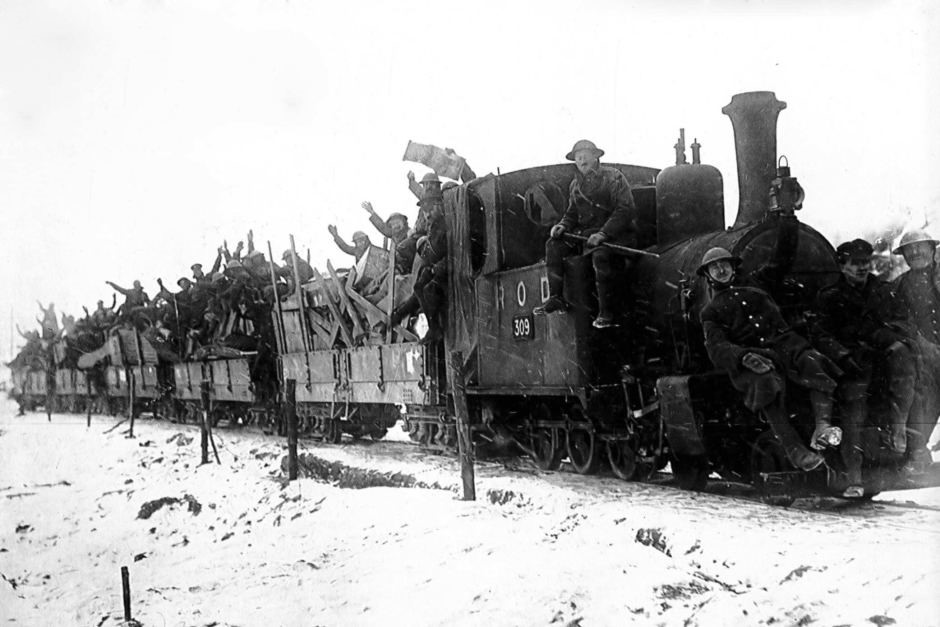 France had developed portable Decauville (ready-made sections of light, narrow gauge track fastened to steel sleepers; this track was portable and could be disassembled and transported very easily.) railways for agricultural areas, small scale mining and temporary construction projects. They had standardized 600 mm (1 ft 11 5⁄8 in) narrow gauge. The British War Department Light Railways and the United States Army Transportation Corps used the French 600 mm narrow gauge system.
France had developed portable Decauville (ready-made sections of light, narrow gauge track fastened to steel sleepers; this track was portable and could be disassembled and transported very easily.) railways for agricultural areas, small scale mining and temporary construction projects. They had standardized 600 mm (1 ft 11 5⁄8 in) narrow gauge. The British War Department Light Railways and the United States Army Transportation Corps used the French 600 mm narrow gauge system.
Standard (and broad gauge) railways provided the heavy hauling from ports and industrial centers to transfer points several miles behind the front lines. Baldwin provided large numbers of heavy 2-8-0 locomotives to the Allied powers. Materials and men would be transferred to narrow/light railways of 60cm (23-5/8″) gauge. The initial line would use steam locomotives. Steam locomotives could haul heavy loads but the smoke trail was a great target for long range artillery, so required fog or darkness to operate within visual range or artilery. Additional transfer locations were setup just outside the combat areas where locomotives like the Baldwin 50hp Gas Mechanical, would take materials and men to the forward lines. The gas mechanicals would put out far less visible emissions and be able to get much closer to the front lines undetected.
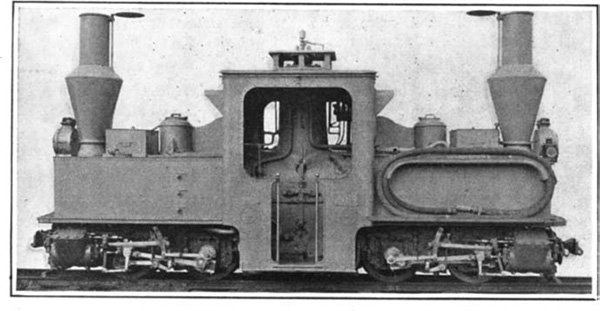 Unskilled laborers and soldiers could quickly assemble prefabricated 5-meter sections of track weighing about 100 kilograms along roads or over smooth terrain. The track distributed heavy loads to minimize development of muddy ruts through unpaved surfaces. Small locomotives pulled short trains of ten-tonne capacity cars through areas of minimum clearance and small-radius curves. This track could also be quickly pulled up if a retreat was required and there was time to do it. These tracks were not meant to be used for a long time so speed of getting the line running was the most important factor.
Derailments were common, but the light rolling stock was relatively easy to rerail. Steam locomotives typically carried a short length of flexible pipe (called a water-lifter) to refill water tanks from flooded shell holes. As can be seen in the picture of a Baldwin Locomotive Works Péchot-Bourdon locomotive with water-lifter pipe carried on right side tank
Unskilled laborers and soldiers could quickly assemble prefabricated 5-meter sections of track weighing about 100 kilograms along roads or over smooth terrain. The track distributed heavy loads to minimize development of muddy ruts through unpaved surfaces. Small locomotives pulled short trains of ten-tonne capacity cars through areas of minimum clearance and small-radius curves. This track could also be quickly pulled up if a retreat was required and there was time to do it. These tracks were not meant to be used for a long time so speed of getting the line running was the most important factor.
Derailments were common, but the light rolling stock was relatively easy to rerail. Steam locomotives typically carried a short length of flexible pipe (called a water-lifter) to refill water tanks from flooded shell holes. As can be seen in the picture of a Baldwin Locomotive Works Péchot-Bourdon locomotive with water-lifter pipe carried on right side tank
When you have 10 minutes to spare, this is probably one of the best you tube videos I have ever seen, it is archive footage from WW1 showing footage of the railways, I enjoyed watching the track laying, and the movement of troops. click to see video
Writen by Paul Marsden with content from Marshall StullFor a more information about the American Expeditionary Force and railways during WW1 check out Marshall's blog WWI Light Railways of the AEF
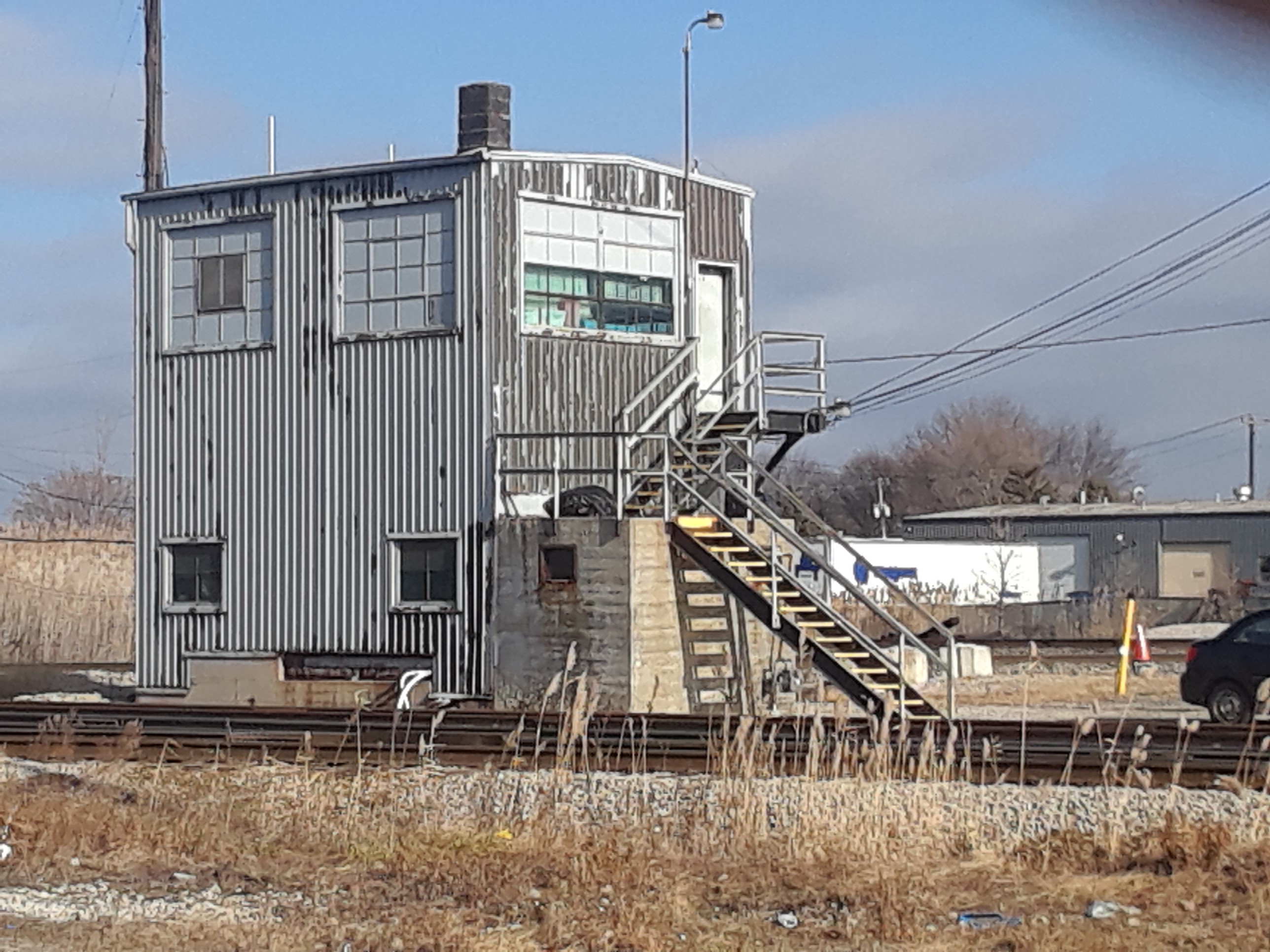
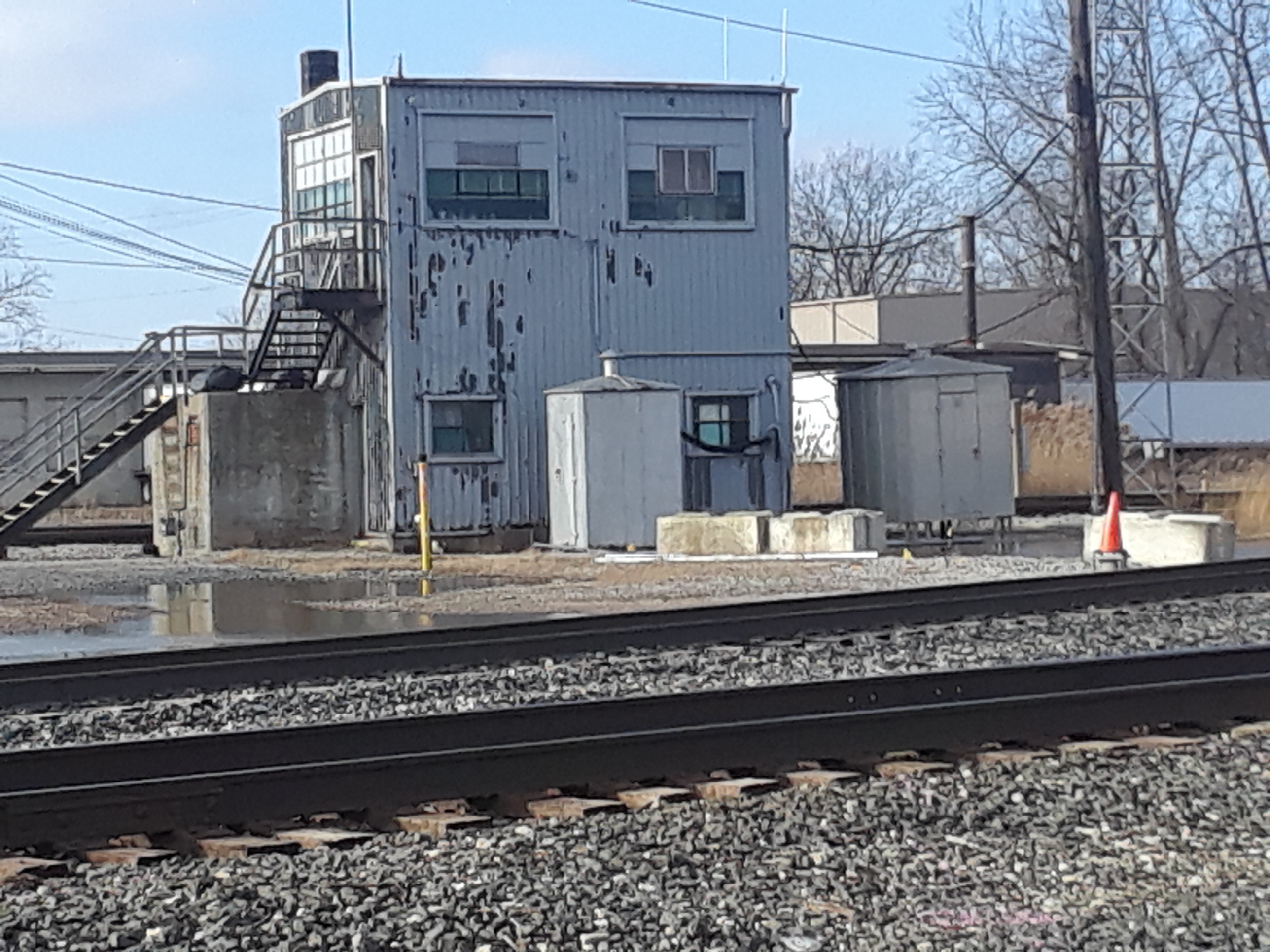 The last operating tower in Ohio is right in our own backyard. Hallett Tower is where the Toledo Terminal and the Ann Arbor railroads crossed. The Toledo Terminal tracks now belong to CSX but still see activity as a branch of CSX to access industries in North Toledo that are still served by rail. And the Ann Arbor is still in operation under Watco Cos.
The last operating tower in Ohio is right in our own backyard. Hallett Tower is where the Toledo Terminal and the Ann Arbor railroads crossed. The Toledo Terminal tracks now belong to CSX but still see activity as a branch of CSX to access industries in North Toledo that are still served by rail. And the Ann Arbor is still in operation under Watco Cos.
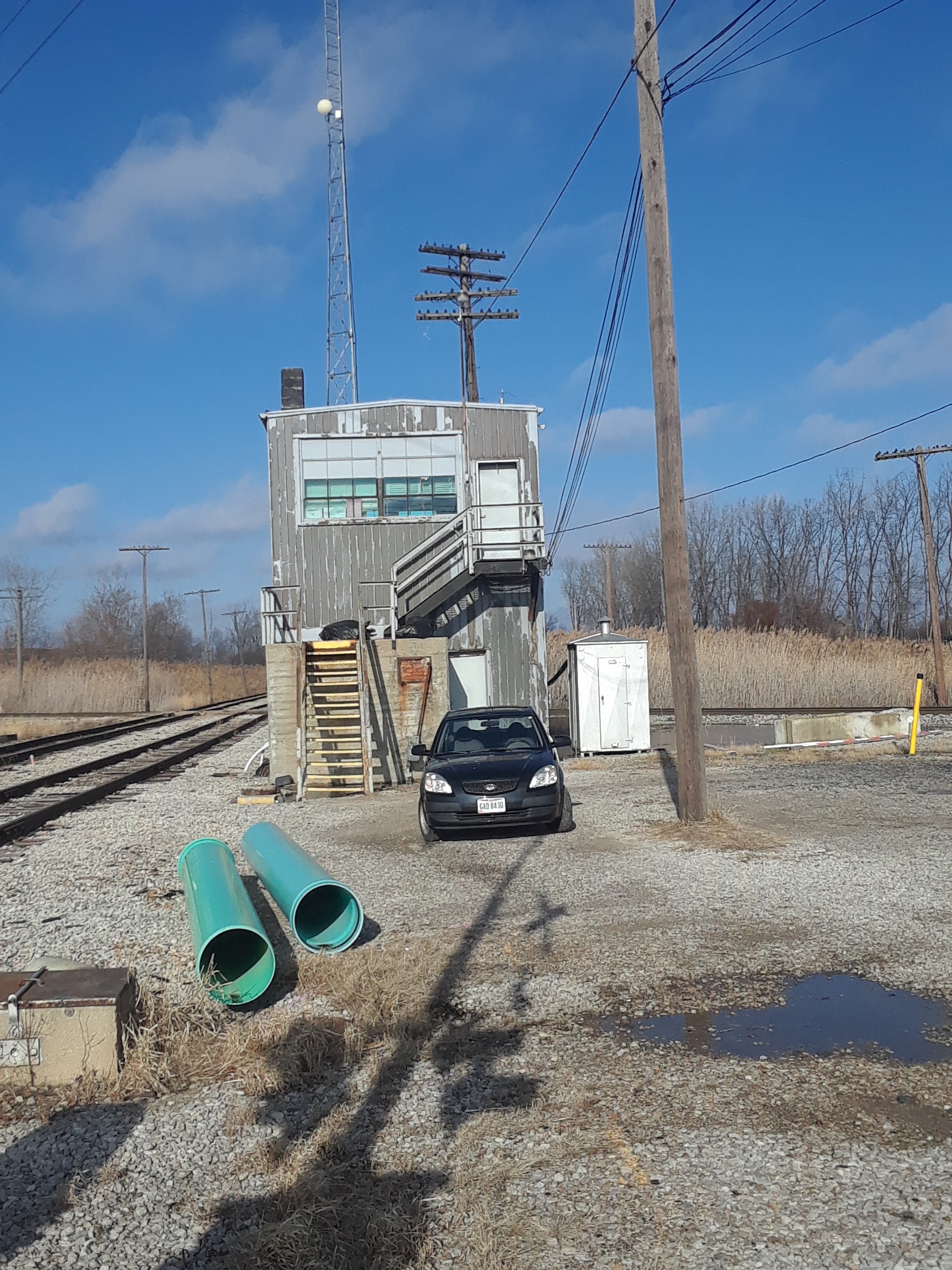 Hallett tower was built in 1949 and has been a working tower ever since. It is not the conventional brick or wood tower but has metal siding, which makes it somewhat unusual. I took the pictures you see in December of 2018 while riding with John Roth to look for parts of the Toledo Terminal still standing. It was a very enjoyable afternoon "rail fanning" Toledo. There is a nice short article in the August 2018 issue of Trains about Hallett tower and an article/map of the month of the Toledo Terminal in the October 2014 Trains issue. As you see by the car in the picture, the tower is still in use, but who knows for how long. So if you want to see a part of railroad history that has all but disappeared take a ride out to Matzinger Road in North Toledo and check out Hallett. You can get very close to the tower without trespassing on railroad property. I'm glad to have seen it in operation before it too disappears!
Hallett tower was built in 1949 and has been a working tower ever since. It is not the conventional brick or wood tower but has metal siding, which makes it somewhat unusual. I took the pictures you see in December of 2018 while riding with John Roth to look for parts of the Toledo Terminal still standing. It was a very enjoyable afternoon "rail fanning" Toledo. There is a nice short article in the August 2018 issue of Trains about Hallett tower and an article/map of the month of the Toledo Terminal in the October 2014 Trains issue. As you see by the car in the picture, the tower is still in use, but who knows for how long. So if you want to see a part of railroad history that has all but disappeared take a ride out to Matzinger Road in North Toledo and check out Hallett. You can get very close to the tower without trespassing on railroad property. I'm glad to have seen it in operation before it too disappears!
Norm Cattell,
Assistant Superintendent

We have Division elections coming up. Please think about standing for an officer position.

Remember we are hosting the regional convention in 2020. We can never have too many volunteers. Let Dave McMullian know if you would like to help
